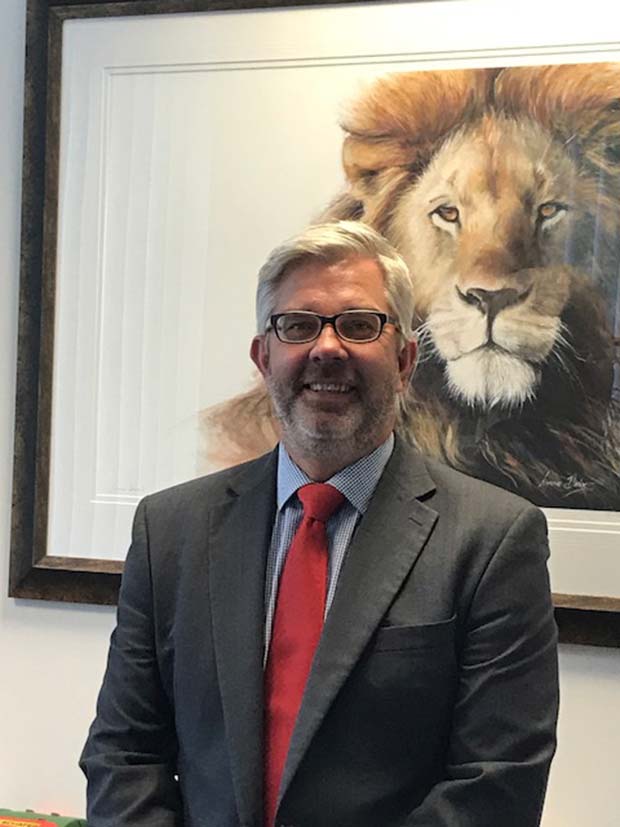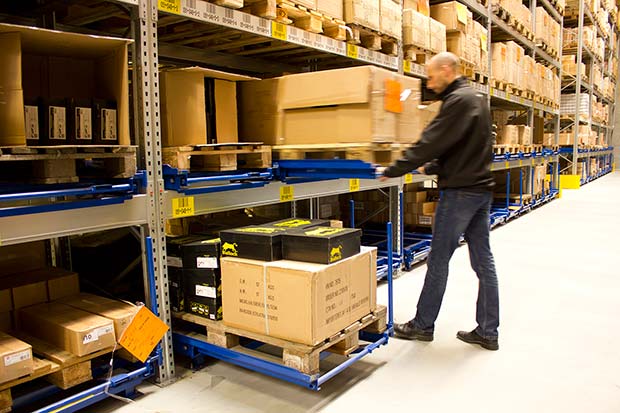Jaap Vos, President of the Storage Equipment Manufacturers’ Association says that while national organisations are usually being well resourced on safety, this leading group believes many SMEs would benefit from the expert support offered by a SEMA member company.

President of SEMA
First established in 1968, SEMA, the Storage Equipment Manufacturers’ Association has completed its 50th year in service. SEMA is the leading UK storage industry body which holds authority and influence across the UK, Europe and worldwide. Today, safe storage is well within reach when you follow our well defined, best practice. We are committed to promoting the safe design, installation and use of storage equipment manufactured and supplied by our members.
SEMA’s groups are interrelated, supporting end users every step of the way. Our guidance has been diligently thought through from project specification, through design, manufacture, distribution and installation involving SEMA Approved Installation Companies (SAICs) and personnel trained to the Storage Equipment Installers Registration Scheme (SEIRS).
All work to relevant codes and are routinely, independently audited to meet our stringent QA criteria. To maintain safety in-use, we also deliver on site rack inspections which are undertaken by our highly trained, qualified and experienced personnel known as SEMA Approved Rack Inspectors (SARIs). Our system of identifying, classifying damage and reporting on inspections has been adopted across the globe – just one example of world class safety management.
Aimed at end users and other industry professionals, SEMA stages two external thought leadership events plus an internal annual meeting for groups to share best practice and disseminate SEMA expertise. The annual 2018 safety conference, Mission Possible, expanded its remit to include some of the wider challenges in the workplace.
Respected speakers broke new ground covering issues such as mental health, 21st century leadership, and a real-life case study of a fork lift amputee. SEMA’s Technical Committee stages a two-yearly specialised seminar delivering innovative content relevant to all those in technical roles.
Manufacturing
Working closely with the statutory authorities, SEMA’s influence this year has continued. Our Technical Committee’s work is respected and continues at both national and European levels.
Demonstrating due diligence, we seek to prove that SEMA products are some of the very best on the market. Members are compelled to engage in independent product assessments carried out on our behalf by the University of Salford. We are reviewing the technical processes required in the design of racking materials which will fit neatly into our manufacturing Quality Assurance scheme.
SEMA’s publication list of over 75 titles continues to expand and update from detailed codes of practice to its site-friendly Tool Box Talks. A Code of Practice on the Installation of Pallet Racking and Other Storage Systems is scheduled for publication in early 2019 and a live storage document is also planned.
SDG & SAIC
Two other SEMA groups are now fully independently audited on compliance standards. Since its formation in 2011, the SEMA Distributor Group (SDG) continues to grow in numbers and strength. Four years ago, the group set out to differentiate themselves from other storage industry operators. Today, it is the only scheme in the UK that independently audits the competence of resellers and distributors of storage equipment. The appraisals follow a three-year cycle and second time around, our Distributor Companies (SDCs) proved that they’d made outstanding progress. The evidence-based assessments for the 30-strong group revealed that every single member passed scrutiny. This means that every single SDC can prove that their project implementation meets and beats the SEMA QA standard by way of independent certification.
Sadly, we know that there are still companies out there passing themselves off as affiliated to SEMA when not entitled to do so. SEMA is currently undertaking a series of actions to allow the possibility for potential legal steps to be taken against “impostors”. So as the saying goes, “Let the Buyer Beware” and end users should ask to see the SDC’s current audit certificate before signing on the dotted line. Well, you wouldn’t buy a new gas boiler without checking if your installer was on the Gas Safety Register, would you? This year, our SAICs followed suit and outcomes of the in-depth quality audit were very positive. SAICs are now working towards a threeyear programme of continuous improvement.
 SARI
SARI
SEMA Approved Racking Inspectors (SARIs) support the safe use, inspection and maintenance of racking in-situ by means of an “Onion Skin” approach. To help endusers, SEMA’s Guide to the Conduct of Racking and Shelving Inspections covers in a broken-down easy to follow format, the methodology taken during the “Expert” (normally annual) inspection.
This SEMA “Onion Skin” consists of three layers, with three overlapping levels of inspection namely; ‘Immediate’ (used to be called the daily) inspection, the ‘Regular’ (used to be called the weekly) inspection and the ‘Expert’ (annual) inspection which needs to be carried out by SARI or a trained specialist, either internal or external.
SEIRS
A best practice example of the industry regulating itself to meet HSE standards is the Storage Equipment Installers’ Registration Scheme (SEIRS), launched in 2000. SEMA’s installer training scheme is approved to operate as a Partner Card Scheme of CSCS as it meets the requirements of the Construction Skills Certification Scheme (CSCS). Uniquely, installers are required to take a refresher course every three years.
SEMA
0121 601 6359




Comments are closed.